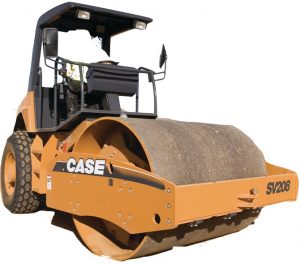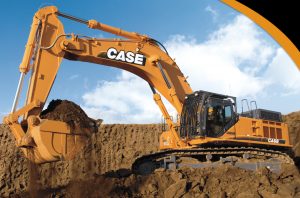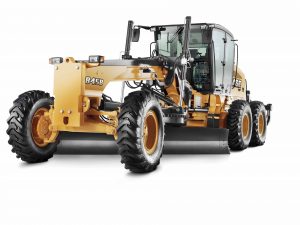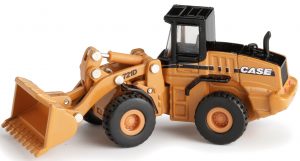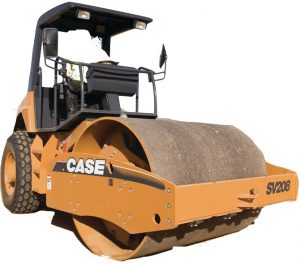
Case SV208, SV210, SV212, SV216, SV223, SV228
Complete digital official shop manual contains service, maintenance, and troubleshooting information for the Case CX350C Crawler Excavator. Diagnostic and repair procedures are covered in great detail to repair, maintain, rebuild, refurbish or restore your Case CX350C like a professional mechanic in local service/repair workshop. This cost-effective quality manual is 100% complete and intact as should be without any missing pages. It is the same factory shop manual used by dealers that guaranteed to be fully functional to save your precious time.
This manual for Case CX350C Crawler Excavator is divided into different sections. Each section covers a specific component or system and, in addition to the standard service procedures, includes disassembling, inspecting, and assembling instructions. A table of contents is placed at the beginning of each section. Pages are easily found by category, and each page is expandable for great detail. It is in the cross-platform PDF document format so that it works like a charm on all kinds of devices. You do not need to be skilled with a computer to use the manual.
“84402832.pdf”
Case CX350C Tier 4 Crawler Excavator Service Manual
1,950 pages
1st edition English
August 2011
“84406998.pdf”
Case CX350C Tier 4 Crawler Excavator Operator’s Manual
254 pages
1st edition English
January 2011
EXCERPT:
Removal and Installation of Counterweight
CAUTION
• Be sure to stop the engine before beginning work.
• Be sure to inspect the wire rope and other lifting equipment before beginning work.
• Do not stand or pass under the suspended load.
• Thoroughly secure the removed counterweight with the wire ropes and liftcrane so that it does not fall over.
Items to prepare
• Box wrench (50 mm)
• Balance lifting device
• Shackles (with the required lifting capacity) x 4
• Wire rope (with the required breaking load) x 4
• Liftcrane (with the required lifting capacity)
• Wood planks, etc.
• Rag
• Cleaning fluid
Removal of Counterweight
1. Remove the following before beginning work.。
• Engine hood, gas damper and lock stay
• Rear view camera and electrical parts bracket
2. Install the shackles (1), and then use the wire ropes (2) and liftcrane to secure the counterweight so that it does not fall during removal and installation operations.
3. Use a box wrench (50 mm) to remove the 4 bolts (1) at the bottom section of the counterweight.
4. Use the wire ropes and liftcrane to lift and remove the counterweight.
• Move the counterweight about 50 cm to the rear while lifting it so that it does not interfere with the housing, engine parts and pipes.
5. Thoroughly check that the location is safe before lowering the counterweight on wood planks (1).
• Thoroughly secure the counterweight with the wire ropes and liftcrane so that it does not fall over.
Installation of Counterweight
1. Install the shackles (1), and then use the wire ropes (2) and liftcrane to secure the counterweight so that it does not fall during removal and installation operations.
2. Use the wire ropes and liftcrane to lift and install the counterweight.
• Suspend the counterweight so that it does not interfere with the housing, engine parts and pipes.
3. Coat the threaded section of the bolt (1) with Loctite, and use a box wrench (50 mm) to fasten the counterweight using the 4 bolts (1) and 4 high-strength washers (2) at the bottom section of the counterweight.
Tightening torque: 1862 – 2058 N·m
4. Install the following after finishing work.
• Engine hood, gas damper and lock stay
• Rear view camera and electrical parts bracket
…
Removal and Installation of Boom
CAUTION
• Stop the machine on a level location with good footing.
• Be sure to stop the engine before beginning work.
• When working together with others, always be sure to exchange signals and pay adequate attention to safety.
• Always wear protective devices (protective eyewear and safety shoes, etc.) when working with a hammer.
• Be sure to inspect the nylon sling and other lifting equipment before beginning work.
• Do not stand or pass under the suspended load.
Items to prepare
• Wrenches (10 mm、19 mm、22 mm、30 mm、36 mm、41 mm)
• Hexagon wrench (12 mm)
• Slide hammer (24 mm)
• Nylon sling (with the required lifting capacity)
• Liftcrane (with the required lifting capacity)
• Marking pen
• Cap
• Plug
• Rag
• Striking rod
• Cleaning fluid
• Wood piece
• Square wooden pieces
• Wire
Removal of Boom
• Remove the bucket. (For details, see “Removal and Installation of Bucket”.)
• Remove the bucket link. (For details, see “Removal and Installation of Bucket Link”.)
• Remove the bucket cylinder. (For details, see “Removal and Installation of Bucket Cylinder”.)
• Remove the arm cylinder. (For details, see “Removal and Installation of Arm Cylinder”.)
• Remove the arm. (For details, see “Removal and Installation of Arm”.)
• This section explains the procedure for when attaching the boom cylinder to the frame.
When removing the boom cylinder too, see “Removal and Installation of Boom Cylinder”.
1. Bring the boom (1) top in contact with the ground.
2. Use a wrench (19 mm) to remove the grease hoses on the left and right sides (1).
• Use caps or plugs to prevent any entry of water, dust or dirt.
3. Use a wrench (36 mm) to remove the double nuts
(1) and bolt (2), and then remove the fastening ring (3).
Also, remove the cab side in the same way.
4. Use a hammer (2) and striking rod (3) to push the pin (1) out.
Use a liftcrane and nylon slings (4) to hold the boom cylinders (right) (left) so that they does not fall.
5. Start the engine, lower the boom at idle, and retract the boom cylinder (1) (2) rod.
6. Tie the cylinder rods on the left and right sides with wire (1) so that they cannot come out.
7. Secure the base of the boom cylinder with the wood piece (1).
8. Lower the boom cylinders (right) (left) and let them rest on the wood piece (1).
• Remove the cab side boom cylinder from the boom in the same way.
9. Install the pin (1) removed in Step 4.
Use a wrench (36 mm) to tighten the bolt (3) with the 2 double nuts (2), and then install the fastening ring (4).
Also, install the cab side in the same way.
10. Use wrenches (41 mm) to remove the hoses (1), (2), (3).
Use a hexagon wrench (12 mm) to remove the
4 hexagon socket head bolts (5) and the 2 split flanges (6), and then remove the hose (4).
• Mark the hoses and lines so that the connectors match at the time of assembly.
…
